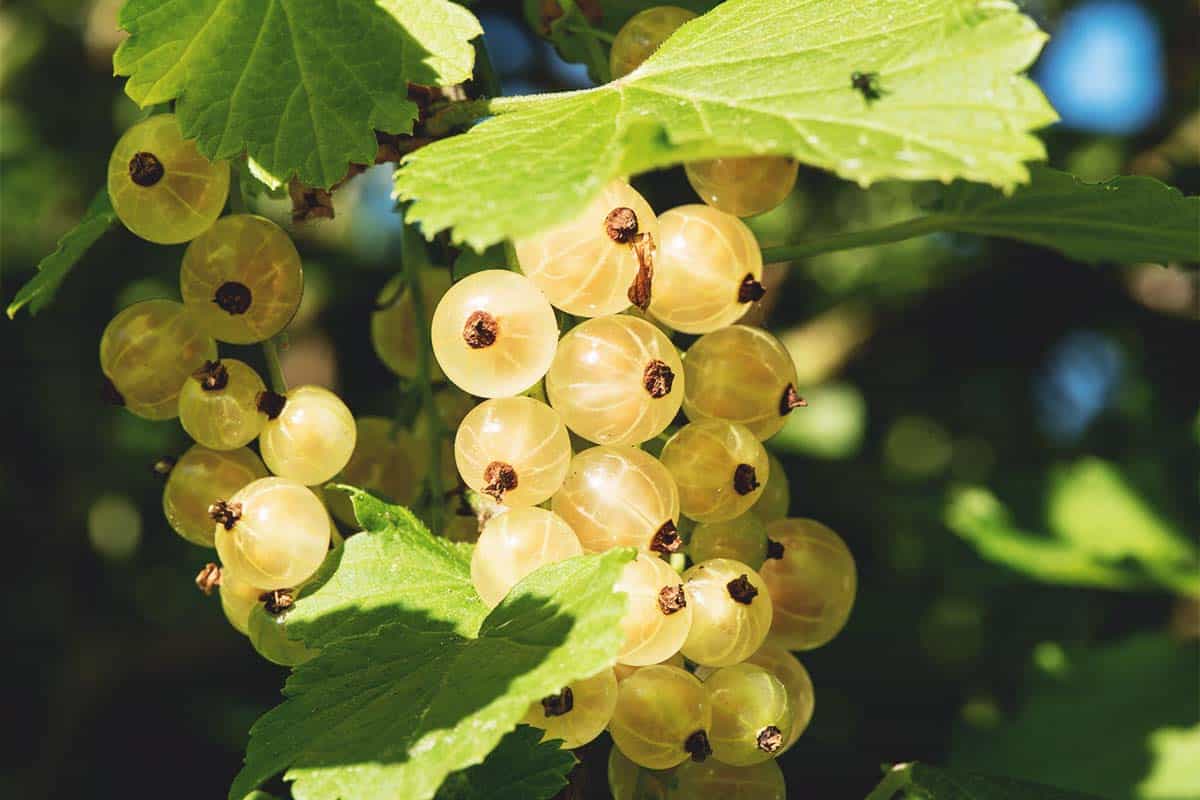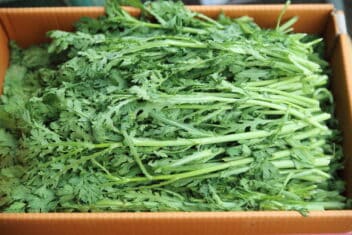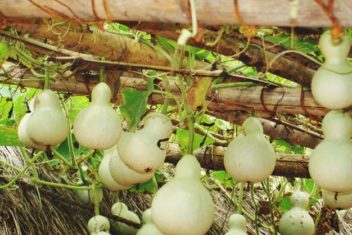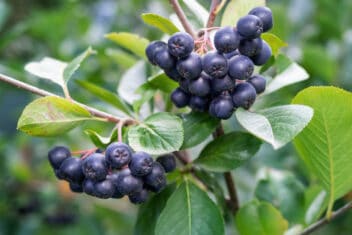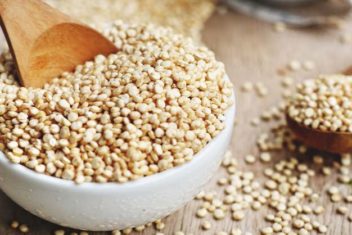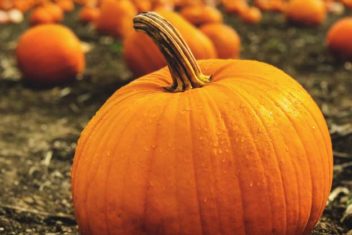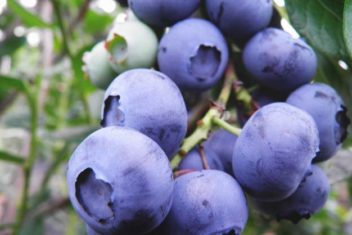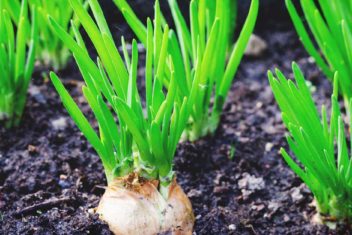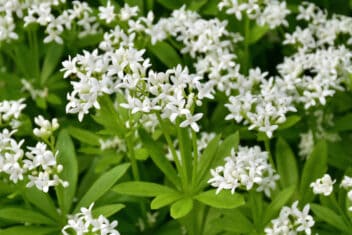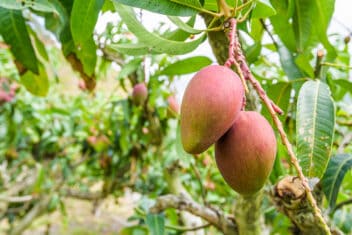I’ve always grown red and black currants because they are super healthy and full of antioxidants. The kids love them too. Then I tried growing white currants and I was converted.
White currants are sweeter than the other varieties and look incredible on the plant. Some are white, others have a yellow or pinkish tint. Then there are translucent varieties. They’re real stunners in the garden.
You won’t regret planting white currants because they produce year after year and if you can get a really good harvest from just a few plants. In fact, if you treat them well, white currants increase their harvest as they get more established.
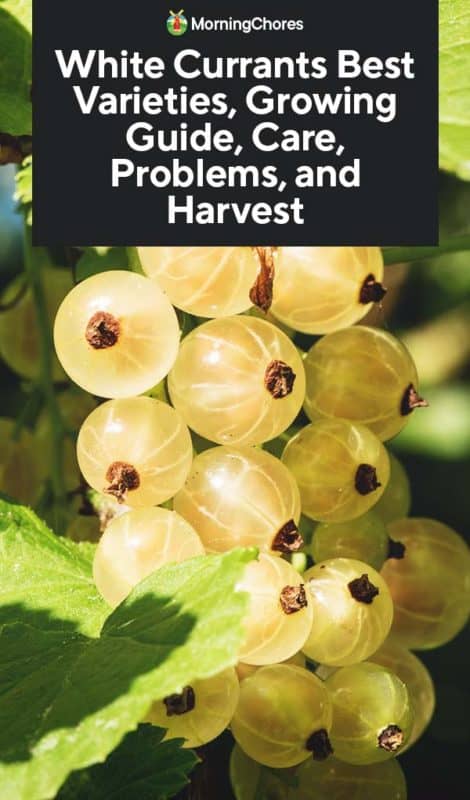
Varieties of White Currants
White currants are usually slightly smaller than black or red currants. Many varieties are self-fertile.
Blanka
Blanka is a high yielding and hardy plant. It’s self-fertile and a great bee attractor. It produces large clusters of juicy, flavorful translucent berries.
White Grape
This is a great variety if you’re limited for space. It has an upright growth pattern. It’s highly productive and has tasty yellow translucent berries.
Versailles Blanch
Versailles blanch berries have a yellow tint and are extremely sweet. I’ve found this variety grows currants that are slightly bigger than other white currants.
This is the most prolific white current variety, and it lends itself to trellising.
White Imperial
White imperial produces loose clusters of pinkish translucent berries. It’s fairly resistant to pests and fungus.
Planting White Currants
The key to successfully growing white currants is to remember they like a cooler climate.
Growing Zones
Although currants can be grown in most areas, they do best in zones 3 to 8.
Sun Requirements
Plant in full sun, but be sure to protect currants from excessive sun and heat. Some varieties do well in partial shade. Consider shade cloth if you can’t avoid the hottest part of the day.
In warmer climates, aim for a northern exposure.
Soil Requirements
White currants need a rich, loamy soil to produce well. Dig well-rotted manure or compost into the soil. They prefer a pH of 6 to 6.5.
When to Plant
Plant outside in the spring when plants are emerging from dormancy. White currants are cold-tolerant, but make sure the worst of the frosts are over if you’re planting seedlings.
Planting Seed
It’s much easier to plant a cutting or to buy a plant from a nursery, but if you want to try planting white currants from seed, here’s how.
The seeds need cold stratification. They must be placed at a cold temperature for four months in order to germinate. Basically, you’re trying to simulate the natural growing environment the seed would experience in the outdoors.
Place currant seeds between two layers of slightly damp peat moss or soft cotton wool.
Place this in a plastic bag with breathing holes and store it in the fridge for four months. Don’t allow the seeds to dry out or freeze.
After four months, fill a container with seed raising mix and sprinkle your seeds onto the surface. Lightly brush the soil over the seeds and spray water to keep it all moist. Place the container in bright, but not direct sunlight.
Once germinated, separate into individual pots and water. White currant plants grown from seed produce fruit in year two or three.
Harden Off
I’ve found it best to harden off older plants before moving them from pot to garden. Give them at least a week transition.
Spacing
Space plants and rows about five feet apart. Remember, you want good airflow between the plants to avoid any diseases that flourish in compact conditions.
Container Planting
I’ve successfully grown white currants in pots, but there are a couple of things to make sure you do.
Feed them regularly. Use liquid fertilizer once a month when watering. Alternatively, use a sustained release fertilizer specifically for container plants, which feed the plant on an ongoing basis.
Caring for White Currants
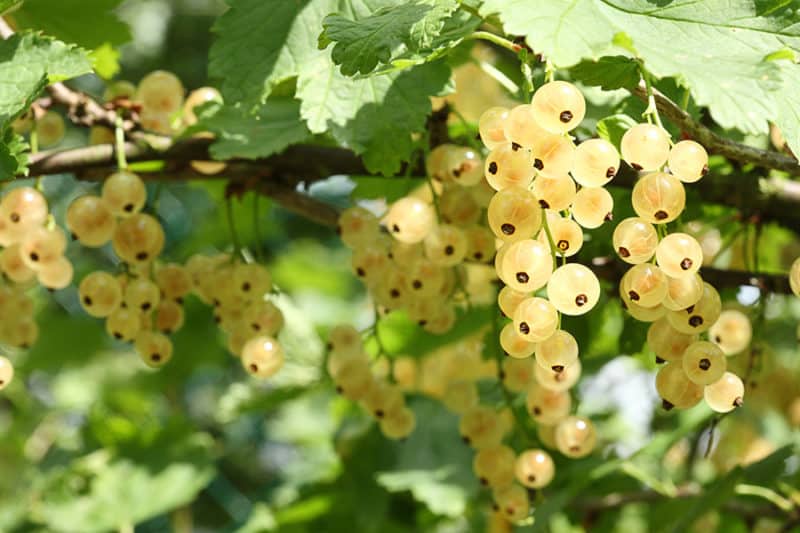
Fertilizer
Give a monthly feed of a well balanced liquid fertilizer. If you find the leaves start to brown around the edges, provide your white currant with potash or a potassium-based fertilizer.
Avoid using fertilizer containing potassium chloride.
Water
Give white currants a deep watering once a week. The best gauge is to keep the soil a little moist but not wet in between watering.
Pruning
The key to a good harvest of white currants is pruning. You should also prune to avoid disease.
In late winter or early spring, start by pruning the criss-cross stems in the center of the plant. Your aim is to make it look like a cage with branches on the outside and a hollow center.
Keep around 15 outward growing stems for a larger plant and 12 or so for a smaller plant. Remove any that are over three years old.
Try to leave an outward-facing bud at the base of any stems you remove because you want those buds to grow into another outward-facing stem.
In summer, there will be a lot of additional growth. Currants like to grow on older stems, so remove many of those new stems, leaving your base plant.
The goal is to maximize fruit growth, not stems.
Companion Planting for Growing White Currants
I find gooseberries are one of the best companions for white currants. Currants also grow well with marigolds, chive, and garlic.
Don’t plant white currants with root vegetables or annuals that you need to plant and dig up each year. White currants can have shallow roots and they’re easy to disturb.
Common Problems and Solutions for Growing White Currant
There are a lot of fungal diseases that affect white currant, but there are also varieties available that are resistant to many of the problems.
Ask your local nursery before you buy plants. Buying a disease-resistant variety saves you a lot of time and heartache in the future.
Currant Rust
Currant rust is common but treatable and avoidable. It’s a fungal disease that starts out with little yellow spots that turn red. If it goes too far, the plant becomes weakened and malformed. Use a fungicide spray at the first sign of infection.
Currant Anthracnose
This is another fungal disease. This one covers the plant in brown spots. It spreads faster than currant rust. Use a fungicidal spray at the first sign.
Powdery Mildew
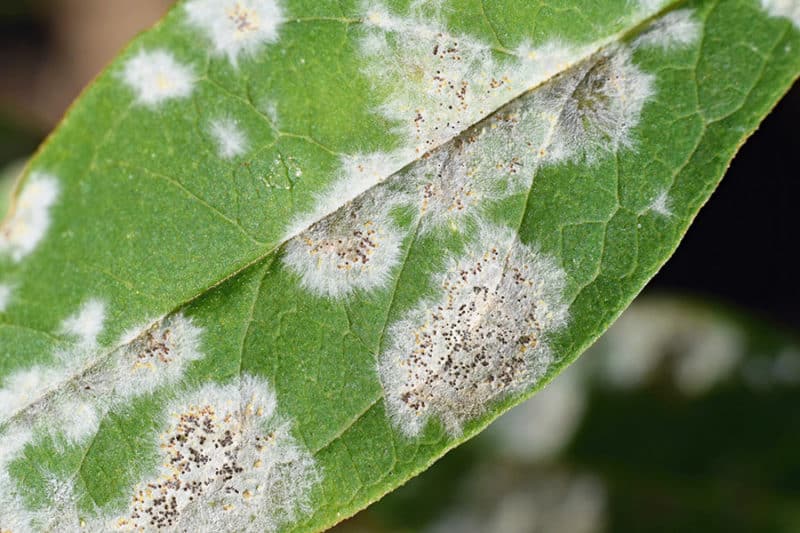
This is common on so many plants in the garden that I sometimes think it’s a matter of time before every plant suffers from it.
To avoid this powdery fungus, don’t get the leaves wet when watering the plant and ensure good airflow between each plant. You can also spray plants with a fungicide, but if things get really bad, it may be best to destroy them and start over.
Aphids

Aphids are one of the most common garden pests. Our guide will help you tackle them when growing white currants.
Blackcurrant Sawfly
If your currant plant’s leaves are being skeletonized, you probably have sawfly. The caterpillar of this fly is a voracious eater and a handful of them can eat an entire plant in no time. Use an insecticide developed for dealing specifically with sawfly.
Currant Borer
Currant borer is the larvae of the currant clearwing moth. They live inside the stems of plants, so they can be hard to stop. The best way to handle this pest is to cut the plant down to the base in December. Your harvest will be poor the next year, but plants should return to their glory the following year.
Big Bud Mite
In the early spring, bud mites start going to work on your currants, making the buds excessively large. There’s no cure, so you should dig up the plants and burn them.
Birds
Birds are my biggest pest for white currants. They seem to know exactly when the currants are ripe and at their sweetest and they swoop.
Cover your white currants with bird netting. Depending on your set up, you may need framing to keep the netting off your plant.
There are also various bird distraction devices available if you have a big enough garden.
Harvesting White Currants
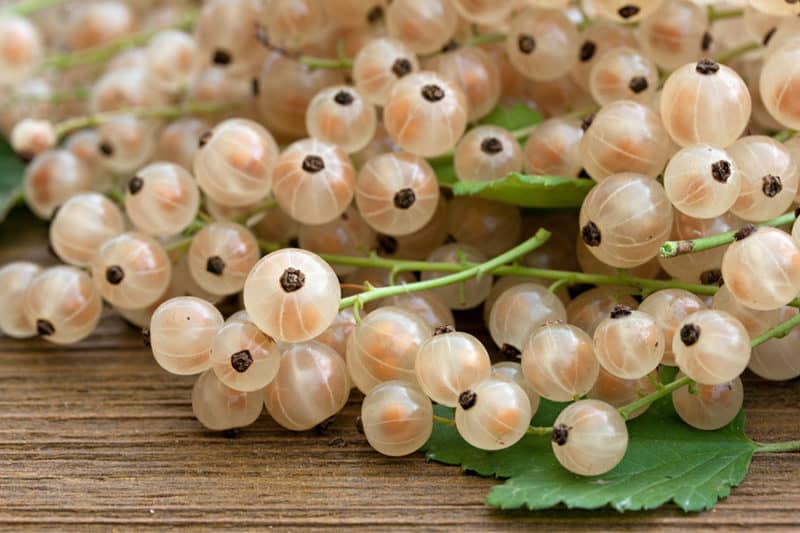
White currants are less acidic than red or black varieties, so they’re particularly tasty straight off the plant.
It’s hard to know when currants are ready sometimes, so the best thing is to test one or two. Once you do this a few times you will be able to tell by the size, color and appearance if they are ripe for picking.
Pick them carefully off the plant because they are small and squash easily. If you’re not gentle of hand, snip off the whole sprig and separate the fruit in the kitchen.
White currants stay fresh in the fridge for a week, but they also freeze well. Simply place them in a bag and pop in the freezer.
They’re delicious in yogurt, on ice cream, as a topping for desserts, or made into a jam.
The possibilities are endless, but so far I’ve used my white currants for jams and jellies, compotes, and as a sauce for oily fish, or rich meats like duck breast.
They go well in fruit crumbles and anything you would use cranberries and red currants for.
The Bottom Line
When it comes to growing fruit, I find white currants incredibly rewarding. You get a big harvest from one plant and there’s nothing tastier than nibbling on sun-warmed currants fresh off the bush. Let us know your favorite way to eat this uncommon treat.
